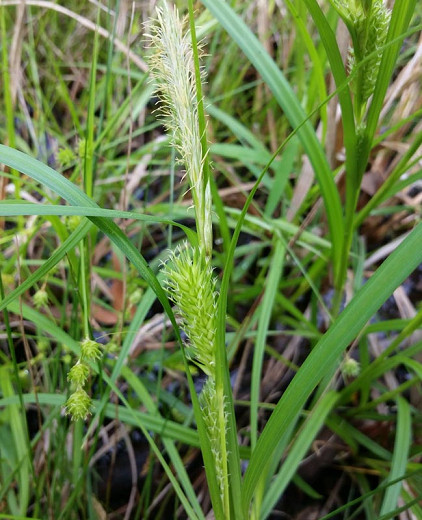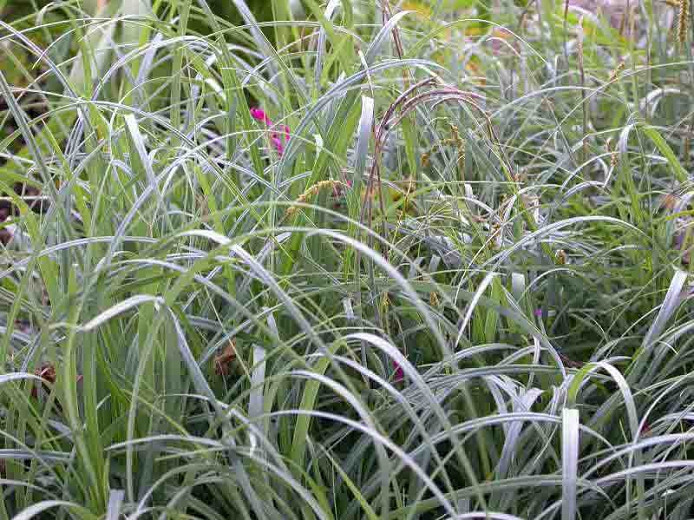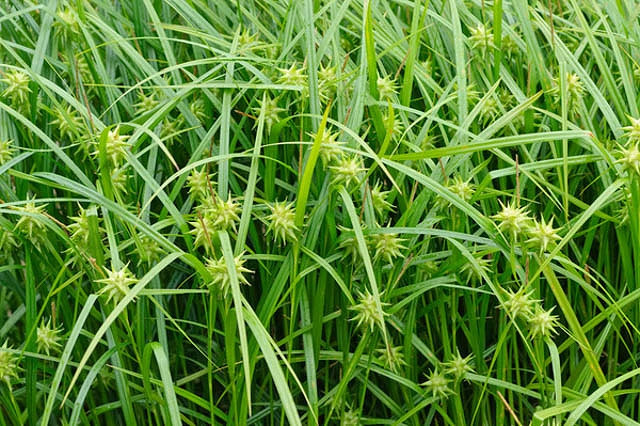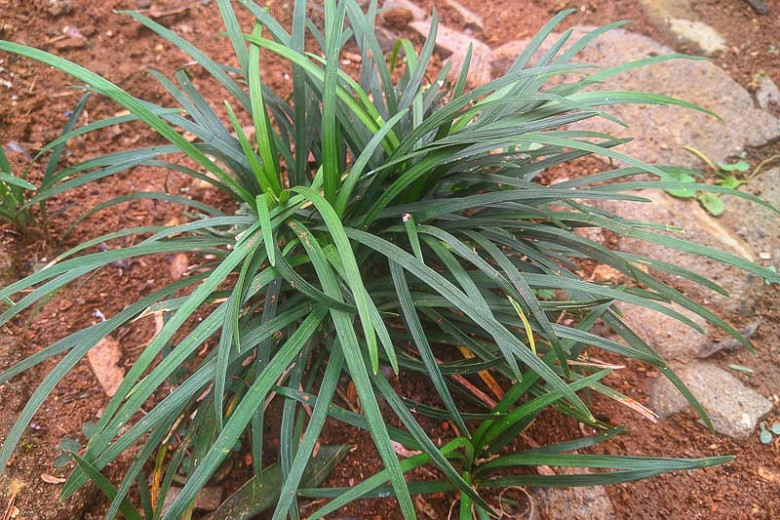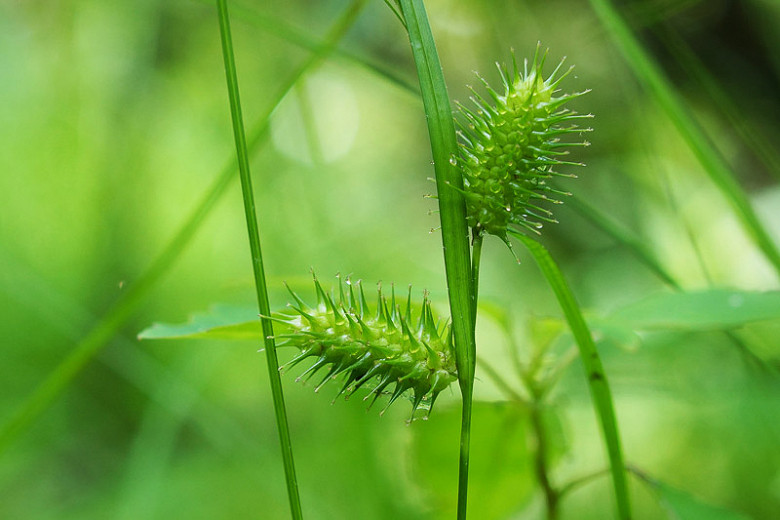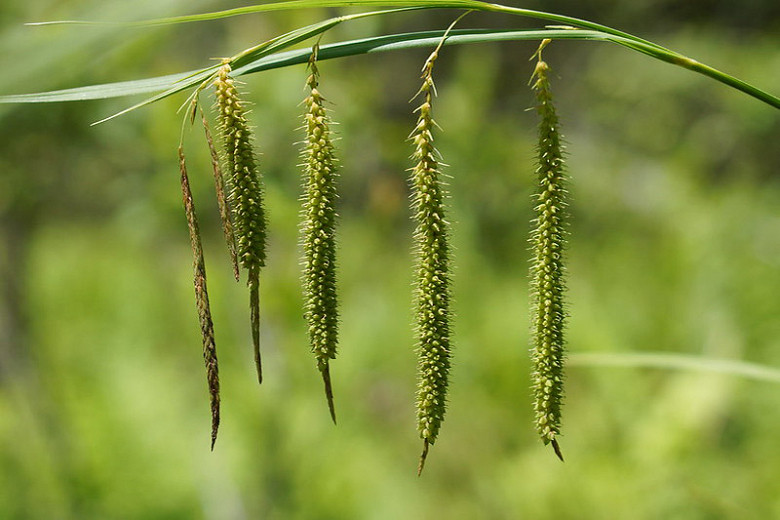Carex lupulina (Hop Sedge)
Carex lupulina (Hop Sedge) is a robust perennial sedge forming a loose tuft of flowering culms and leaves. It produces ascending to widely spreading, recurved, light green leaves, up to 24 in. long (60 cm), along the entire length of the culms up to the inflorescence. In late spring and summer, the culms are topped by large, bright green spikes that resemble a medieval weapon. The female flowers are followed by small fruits enclosed in sac-like bracts. As the seed matures, they take on a golden brown color. Coots, ducks, rails, gamebirds, granivorous songbirds, and other wetland birds feed on the seeds or spikelets. The root system is fibrous and rhizomatous and Hop Sedge eventually spreads by rhizomes. Native to eastern North America, Hop Sedge occurs naturally in wet prairies, prairie swales, wet meadows along rivers, low areas along ponds and lakes, typical swamps and sandy swamps, openings in bottomland woodlands, shallow vernal pools, degraded seasonal wetlands, and ditches. Useful in wetland and shoreline restorations, it is an excellent choice for a water garden, wetland garden, or near ponds and streams.
- Grows up to 24-48 in. tall (60-120 cm) and 12-24 in. wide (30-60 cm).
- Performs best in full sun to light shade in moist to wet soils. Prefers soil containing loam, sand, and clay. Tolerates occasional flooding.
- A good choice for plantings in bog gardens, rain gardens, or near ponds and streams.
- No serious pest or disease issues. Deer resistant.
- Propagate by seed or by division in spring.
- Native to most of eastern North America.
Requirements
| Hardiness | 3 – 9 |
|---|---|
| Plant Type | Ornamental Grasses, Perennials |
| Plant Family | Carex – Sedges |
| Exposure | Full Sun, Partial Sun |
| Season of Interest | Spring (Late)Summer (Early,Mid,Late)Fall |
| Height | 2' – 4' (60cm – 120cm) |
| Spread | 1' – 2' (30cm – 60cm) |
| Spacing | 18″ – 24″ (45cm – 60cm) |
| Water Needs | Average, High |
| Maintenance | Low |
| Soil Type | Clay, Loam, Sand |
| Soil pH | Acid, Alkaline, Neutral |
| Soil Drainage | Moist but Well-Drained, Moisture Retentive, Poorly Drained |
| Characteristics | Showy |
| Native Plants | United States, Midwest, Illinois, Indiana, Iowa, Kansas, Michigan, Minnesota, Missouri, Nebraska, Ohio, Wisconsin, Northeast, Connecticut, Delaware, Maine, Massachusetts, Maryland, New Hampshire, New Jersey, New York, Pennsylvania, Rhode Island, Vermont, Southeast, Alabama, Arkansas, Florida, Georgia, Kentucky, Louisiana, Mississippi, North Carolina, South Carolina, Tennessee, Virginia, West Virginia, Southwest, Oklahoma, Texas |
| Tolerance | Deer, Wet Soil |
| Attracts | Birds |
| Garden Uses | Bog Gardens, Ponds and Streams, Rain Gardens |
| Garden Styles | Informal and Cottage |
